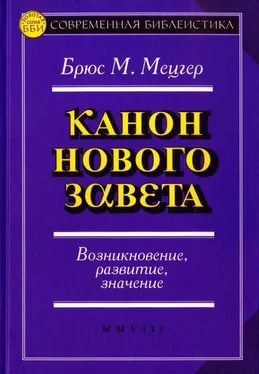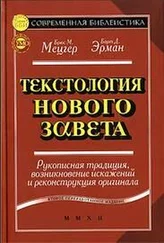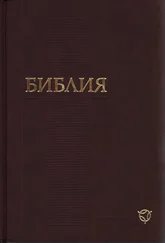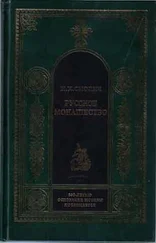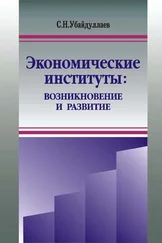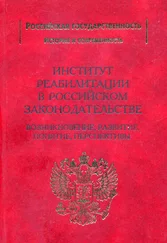О том, насколько глубоко было пересмотрено Маркионом богословие Павла, см. R. Joseff Hoffmann, Marcion; On the Restitution of Christianity. An Essay on the Development of Radical Paulinist Theology in the Second Century (Chico, 1984) — хотя некоторые аргументы автора не столько убедительны, сколько остроумны.
Это резонный вывод из Кол 4:16, если в Маркионовом тексте Еф отсутствует фраза «в Ефесе» (έν Έφέσω) в начальной фразе. Этих двух слов нет в φ 46и в главных документах александрийского текста (א* В* 1739).
С другой стороны, так называемые анти–Маркионовы прологи к Евангелиям не могут служить нам препятствием. Эти предисловия появляются в 38 латинских кодексах (датируемых V—X веками) перед Евангелиями от Марка, Луки и Иоанна. De Bruyne («Les plus anciens prologues latins des Evangils», Revue bйnйdictine, xl [1928], pp. 193–214) считал, что они (вместе с утраченным Прологом к Матфею) были написаны для анти–Маркионова издания Четвероевангелия, опубликованного в Риме между 160–180 гг. по P. X. в противовес урезанному Маркионом изданию Евангелия. Последующие исследования, однако, увенчивающиеся монографией Юргена Регуля (Jьrgen Regul) Die antimarkionitischen Evangelienprologe (Freiburg, 1969), привели многих ученых к выводу, что прологи были независимы друг от друга и не составляли цельного ряда. Они датируются самое раннее IV веком, когда маркионизм уже не представлял сколько–нибудь серьезной угрозы для Церкви.
«Prologues bibliques d'origine marcionite», Revue bйnйdictine, xiv (1907), pp. 1–16.
«Marcion and the Canon», Expository Times, xviii (1906–1907), pp. 392–394.
Theologische Literaturzeitung, xxxii (1907), cols. 138–140.
The Gospel History and Its Transmission, 2nd ed. (Edinburgh, 1907), pp. 353–357.
«Zur Überlieferungsgeschichte des Römerbriefes», Zeitschrift für die neutestamentliche Wissenschaft, x (1909), pp. 145 и 97–102.
Karl Th. Schäfer, «Marcion und die ältesten Prologe zu den Paulusbriefen», Kyriakon: Festschrift fur Johannes Questen, ed. by Patrick Granfield and J. A. Lungmann, i (Munster i. W., 1970), pp. 135–150, and «Marius Victorinus und die marcionitischen Prologe zu den Paulusbriefen», Revue bйnйdictine, lxxx (1970), pp. 7–16.
Wilhelm Mundle, «Der Herkunft der «Marcionitischen» Prologe zu den Paulusbriefen», Zeitschrift fur die neutestamenliche Wissenschaft, xxiv (1925), pp. 56–77.
M. — J. Lagrange, «Les Prologues prйtendus marcionites», Revue biblique, xxxv (1926), pp. 161–173.
H.J. Frede, Altlateinische Paulus–Handschriften (Freiburg i. В., 1964), pp. 165–178.
Ν. Α. Dahl, «The Origin of the Earliest Prologues to the Pauline Letters», The Poetics of Faith; Essays offered to Amos Wilder, ed. Wm. A. Beardslee (Semeia, xii; Missoula, 1978), pp. 233–77.
Там же, p. 236. Идеи Даля разработаны в исследовании John J. Clabeaux, «The Pauline Corpus which Marcion Used: The Text of the Letters of Paul in the Early Second Century», Ph.D. diss, Harvard University, 1983.
Примеры возможных маркионитских искажений текста в новозаветных рукописях см. в August Pott, «Marcions Evangelientext», Zeitschrift fur Kirchengeschichte, xlii (1923), p. 202; Robert S. Wilson, Marcion. A Study of a Second–Century Heretic (London, 1933), pp. 145–150; E. C. Blackman, Marcion and His Influence (London, 1948), pp. 50–52 and 128–171; H. G. Vogels, «Der Einfluss Marcions und Tatians auf Text und Kanon des NT», in Synoptische Studien. Alfred Wikenhauser … dargebracht (Munich, 1953), pp. 278–289; and idem, Handbuch der Textkntik des Neuen Testaments, 2–е изд. (Bonn, 1955), pp. 140–144.
Это может удивить, но, как замечает фон Кампенхаузен (von Campenhausen), «перестает удивлять, когда мы обнаруживаем, что тогда не было точного обозначения и для Ветхого Завета как целого» ( The Formation of the Christian Bible, p. 163 n. 67).
Harnack, Marcion, pp. 210–215, и Origin of the New Testament, pp. 30–35 и 57–60, за которым последовала работа von Campenhausen, «Marcion et les origines du canon nйotestamentaire», Revue d'histoire et de philosophie religieuses, xlvi (1966), pp. 213–226.
John Knox, Marcion and the New Testament. An Essay in the Early History of the Canon (Chicago, 1942), pp. 19–38. Для ознакомления со взглядами ученых, предвосхитивших идеи Нокса, см. Ernst Jacquier, Le Nouveau Testament dans l` Eglise chrйtienne, i. 3e йd. (Paris, 1911), pp. 158 и далее.
Op. cit., p. Xvi. Ср. также взвешенные замечания David L. Balвs в «Marcion Revisited: A «Post–Harnack» Perspective», in Texts and Testament; Critical Essays on the Bible and Early Church Fathers, ed. by W. Eugene March (San Antonio, 1980), pp. 97–108.
R. M. Grant, The Formation of the New Testament, p. 126.
Cp. P. De Labriolle, La Crise montaniste (Paris, 1913); idem, Les Sources du l'histoire de Montanisme (Fribourg–Paris, 1913); Agostino Faggiotto, L'eresia dei Frigо (Scrittori cristiani antichi, ix; Rome, 1924); F. E. Vokes, «The Use of Scripture in the Montanist Controversy», Studia Evangelica, ed. by F. L. Cross, ν (Berlin, 1968), pp. 317–320; Frederick C. Klawiter, «The New Prophecy in Early Christianity; the Origin, Nature, and Development of Montanism», Ph.D. diss., University of Chicago, 1975; и Η. Paulson, «Die Bedeutung des Montanismus fur die Herausbildung des Kanons», Vigiliae Christianae, xxxii (1978), pp. 19–52.
Конфликт между Епифанием (Panarion, xlviii. 1, 2) и Евсевием (Церковная история, IV, 27, 1) привел ученых, как и можно было ожидать, к широкой разноголосице мнений; ее резюме и обсуждение (заключенное выводом в пользу Евсевия) см. d D. Barnes, «The Chronology of Montanism», Journal of Theological Studies, n.s. xxi (1970), pp. 403–408, и его монографию под названием Tertullian, a Historical and Literary Study (Oxford, 1971), особенно pp. 130–142.
Читать дальше
